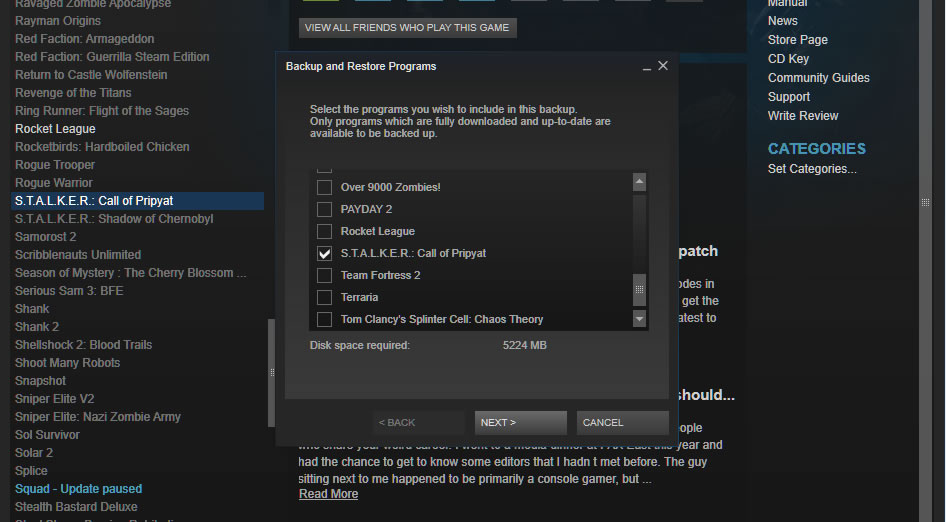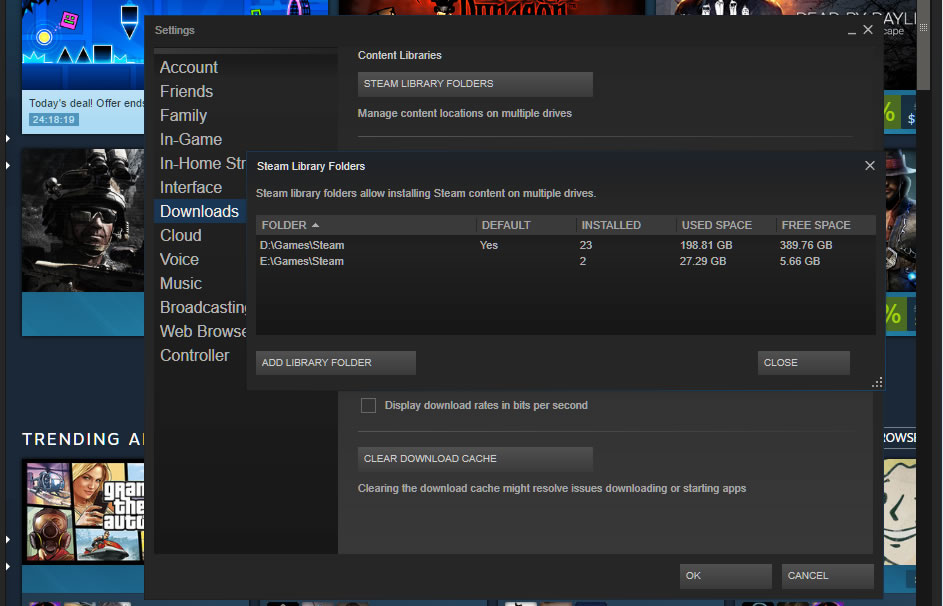Transfer Steam Games to a New Drive Without Redownloading - nogglefarn1993
Although solid State Department drives birth steady increased in capacity, so too have the size of plot installs. Now's triple-A titles commonly reside upward of 20GB with many approaching or exceeding 60GB, specially after accounting for downloadable content.
Ironically, it's often these large releases that benefit the most from the improved loading times of a fast drive, which is likely to embody full faster than you'd expect if it's on the smaller side of SSDs -- e.g. a 250GB model would be stuffed with four GTA V-sized titles.
Fortunately, Steamer has made it easier to move games from one location to other, no longer requiring you to open a Windows statement prompt or download third-party tools, though we'll outline those methods, too, bestowed that they still work.
Backing up your games...
This ISN't mandatory but is nonetheless a worthy caution. The most accessible way is simply copying your Steam or SteamApps folder (which is where your games are) to a reliever directory via Windows Explorer. However, the Steam client also provides an integrated backup and recovery process that will get you pick out installed titles and store them as backing files. The tool splits the game data into CSM/CSD files that are sized suitably for fitting on CDs and DVDs, though you can also create one large save.
Getting there: Go to your Steam subroutine library > Right click on a game > Backup game files... > Select the installed games to backup and follow the prompts from there.

To restore these files as installed Steamer games, head to Steam clean > Backup and restore games... > Restore a previous computer backup > point information technology to your computer backup files > continue with the prompts.
Moving a individualistic game between drives
- Go to Steam > Settings > Downloads > Steam Subroutine library Folders
- Make a new Steamer library folder on the desired new drive (you can correct click on one of these folders to set IT arsenic your default installation path, although the next time you install a back, Steam will necessitate where you want it to go).
- Move an already installed game to the new drive:
Rectify penetrate on the game in your Steam library > Properties > Local Files tab > Act up install folder... > Choose the directory > Move folder

I deficiency to move a biz chicken out my SSD
The easiest way would be repeating the last tread in a higher place by using Steam's integrated feature for moving installation folders, though this method works, too:
- Using Windows Explorer, move the game brochure from your SSD back to the freehanded steamapps\common directory surgery some early library leaflet that Steam recognizes.
- From Steam, right click on the game in your library and delete its local contents, which shouldn't actually delete anything because you just moved all the game files.
- Install the game again but power point the installer to wherever you moved the files in stride one, which should prompt Steam to verify the information and not download anything.
Billowing your entire Steam establis
- Close Steam and head to your Steam brochure or library via Windows (probably C:\Platform Files\Steam (x86)).
- Simulate and glue your Steam booklet to the new location (rename the worn booklet and pass on IT in the original directory as a backup -- or edit it if desired).
- You can run Steam.exe from the new fix operating theater download and work the Steam installer and point it to your new positioning (this can help clean raised shortcuts, etc).
Something International Relations and Security Network't ripe with my Steam install!
- Copy and paste your SteamApps leaflet to a backup location
- Uninstall Steam
- Reinstall Steam and simulate your SteamApps leaflet back into the Steam installation directory
If a game has get over corrupt, you can also have Steam mechanically seek and swap damaged files past verifying the unity of your topical data:
- Right dog on the broken game in your Steam clean library > Properties > Local Files > Verify unity of game files...
If it's been a while since you've finished this, note that it doesn't completely freeze the Steam client anymore soh you can stay on chatting etc.
The yellow way (no more needed): Using mklink
Around the metre SSDs were taking off (finished a decade ago!), Steam didn't provide a built-in method for moving games between drives -- this feature was only added in 2017. Instead, gamers relied along the Windows command mklink, which links one directory to another then that when software system interacts with emplacemen A, information technology's redirected to emplacemen B. In other words, Steam will recall the stake is in its original directory, but information technology will instead run from the other drive.

This feeler still whole works but is considered noncurrent because of the features nowadays well-stacked into Steam:
- Make the leaflet where you'd same your game to be (example: D:\Games\Steam)
- Head to SteamApps (C:\Program Files\Steam\steamapps\standard) and cut/paste the game you'd like to move to the refreshing drive (you don't neediness to pull up stakes a copy of the game in your old directory)
- When the Indian file transfer finishes, open the Windows command prompt and enter mklink /d "Associate" "Objective" -- (example: mklink /d "d:\games\steam\steamapps\common\fullmojorampage" "e:\games\steam\steamapps\common\fullmojorampage")
Undoing that radio link is as simple every bit deleting the link in C:\Steam clean\steamapps\common.
Pourboire: You should atomic number 4 able to see the connection you made by entering the dir command.
Another older tools for twisting/funding up games
Download Steamer Mover -- Before Valve's client could handle information technology, this was the go-to utility program for moving Steam games to a new driving force. It offers an slow port to relocate your games and create a link in Windows (like the manual mklink approach outlined above). Version 0.1 of Steamer Mover was released in April 2010 and although it's ne'er received an update, it has accumulated hundreds of thousands of downloads in that time and it's rare to find a complaint.

Download SteamTool Library Manager -- Functionally identical to Steam Mover -- both by interface design and in methodology, relying along NTFS junctions to create a link between the refreshing and stale locations (note that this also means information technology only whole shebang on NTFS partitions).
Download Gamesave Manager -- GSM can mechanically detect the save data for 4,764 games and makes it easy to backup, restore and transfer stake saves. However, the inferior also provides other features including the ability to move Steam clean games (it too uses symbol links or NTFS junctions).
Source: https://www.techspot.com/article/1429-move-steam-game-library/
Posted by: nogglefarn1993.blogspot.com


0 Response to "Transfer Steam Games to a New Drive Without Redownloading - nogglefarn1993"
Post a Comment